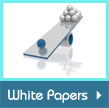Qorso develops standards and guidelines for Travelocity’s white label platform.
“Travelocity’s competitive edge in eCommerce is that the distribution of travel online is a scalable business – serviced with little additional cost no matter if we have 10 customers or 10 million. Achieving success in developing a scaleable framework for requirements definition and documentation was a pivotal objective in our efforts to build out our global technology platform. Qorso Technology’s ability to understand the scope of the challenge and manage the inherent layers of complexity in the task at hand made them an invaluable partner in the process to build the technical underpinnings that will service our various applications globally.”
About Travelocity
Travelocity connects people with the world’s greatest travel possibilities through a diverse mix of travel brands. Brands that help a traveler find the best price, improve a travel agency’s efficiency and profitability, make sure a flight has a qualified crew ready to go, or an executive assistant has the tools to book travel online. But that’s just the beginning. Our brands power the travel industry.
The Challenge
To leverage Travelocity’s efficient operating model and industry-leading online travel agency experience, the company embarked on a large initiative to build a new white label platform that would improve the “onboarding” process of new brands. Since numerous multi-national brands had different requirements, the new platform needed to be highly customizable, translated and localized, and managed through a content management system. Additionally, it needed to accommodate local legal and regulatory requirements.
The Solution
Travelocity engaged Qorso Technology to design the white label portal as well as develop a design and requirements process that could efficiently bring all future brands onto the new platform. Because Qorso Technology was involved in developing the design and documentation process that migrated CheapTickets to the Orbitz Worldwide platform, the team quickly designed and documented new wireframes and detailed specifications for Travelocity while following European Union accessibility guidelines. The new process can be localized to any culture or language, and conforms to priority 1 and 2 WAI guidelines.
Furthermore, the object-oriented approach easily documents configuration permutations of wireframes and specifications. The process clearly identifies content needs for the content management and Web services teams, identifies elements to be localized and how, and documents accessible rich interactions.

The Results
The self-contained modules that Qorso Technology created improved Travelocity’s development process. The flexible Qorso Frameworx modules allow developers to move and reuse them with ease. Additionally, other internal teams leveraged Qorso’s work. The QA teams used the numbering and nomenclature to build all use cases and the CMS team used the structure and documentation to build out their taxonomy.
* Wider adoption and faster implementation of full-service third party travel sites that use Travelocity as their bookings engine. A 35% improvement Year over Year 2009 to 2010.
* More flexibility and customization options for “white-boxing” third party sites into the Travelocity booking engine and support platforms.
* Time to market for new third-party travel sites was reduced from an average of 180 days to 60 days.






